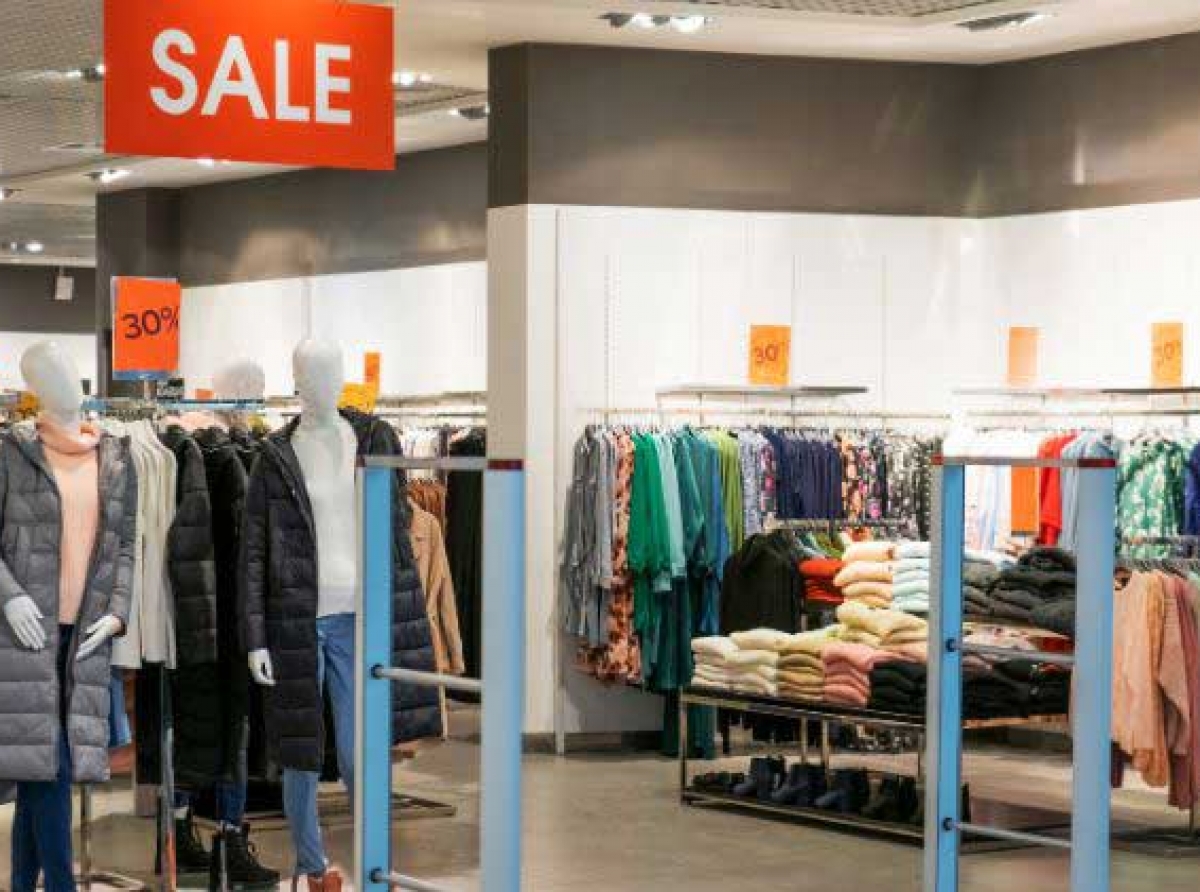Small Towns, Big Returns: Value fashion retailers redefining India’s organized retail

31 October 2025, Mumbai
India’s retail story is undergoing a powerful transformation and it’s not happening in glitzy malls or luxury boutiques. Instead, it’s unfolding in the bustling lanes of Tier II, III cities, where value fashion chains are redefining organized retail through a mix of scale, speed, and sharp pricing.
While Trent’s Zudio and Reliance’s Yousta often dominate the headlines, a deeper look reveals a far broader movement. From V2 Retail to Baazar Style, Vishal Mega Mart, and Cantabil Retail, a cohort of agile value retailers is quietly building an empire by mastering the economics of affordability and aspiration.
Table: Value retail revenue, growth and strategy
|
Retailer/Brand |
Segment focus |
Q2 FY26 revenue (Rs cr) |
YoY revenue |
Q2 FY26 PAT (Rs cr) |
Top strategy |
|
Trent Ltd. (Zudio) |
Value & Mid-Market |
5,002.00 |
+17 per cent (Standalone) |
Yet to Announce (Driven by Zudio) |
Fast-Fashion, Aggressive Tier 2/3 Store Rollout |
|
Reliance Retail (Yousta) |
Value & Premium |
90,018 (Consol. Gross) |
+22 per cent (F&L Segment) |
3,457 (Consol. PAT) |
Dual Strategy, Rapid Yousta Scaling |
|
V2 Retail |
Value Fashion (Tier 2/3) |
629.70 (Q1 FY26) |
+52 per cent (Q1 FY26) |
27.75 (Q1 FY26) |
High Volume Growth, High Private Label Contribution |
|
Baazar Style Retail |
Value Fashion (East India) |
5,319 (Q2 FY26) |
+71 per cent (Q2 FY26) |
Not disclosed for Q2 |
Cluster-Based Tier 2/3 Expansion, High Sales/sq ft |
|
Cantabil Retail |
Value/Mid-Market Menswear |
158.68 (Q1 FY26) |
+24.35 per cent (Q1 FY26) |
14.67 (Q1 FY26) |
Strong Historical Earnings Growth, Zero Debt |
|
Shoppers Stop |
Premium Dept. Store |
1,175.31 |
+10 per cent |
Net Loss (22.68) |
Cost Headwinds, Value Format (INTUNE) Growth |
|
ABFRL |
Premium Brands |
3,643.86 |
+117.65 per cent (Amalgamation) |
Net Loss (185.90) |
High Cost of Brand Integration, Premium Market Squeeze |
Read our latest issue
V2 Retail: Speed, scale, and smart fashion for Bharat
In the value fashion segment, few names have shown as much velocity as V2 Retail. The company posted a 52 per cent year-on-year surge in revenue in Q1 FY26 to Rs 6.3 billion, continuing its streak of strong double-digit growth.
Its earnings per share (EPS) jumped 159 per cent YoY to Rs 20.83, underscoring how operational discipline can translate to profitability even in a price-sensitive segment.
V2’s winning formula: Focused penetration across 165+ cities with 216 stores, primarily in Tier II, III clusters.
A striking 61 per cent of revenue now comes from private labels, up from 45 per cent in FY25, a shift that ensures higher margins and full control over fashion cycles. “Our growth engine runs on small-town aspirations and fast inventory turns,” said a senior company executive. “We don’t just sell clothes, we sell affordability with style.”
Vishal Mega Mart, building the Walmart of value India
If V2 is sprinting, Vishal Mega Mart (VMM) is running a marathon. With 717 stores across 472 cities, VMM has evolved from a discount outlet chain to a diversified retail titan.
Apparel contributes 44 per cent of its sales, while FMCG and general merchandise provide balance, a structure that insulates it from fashion volatility. Over 70 per cent of its revenue originates from non-metro regions, where VMM’s model resonates most.
In Q1 FY26, the company posted 21 per cent growth, with Gross Margins at 28.4 per cent and EBITDA Margins at 14.6 per cent, a testament to the power of its 75.8 per cent private brand mix. Analysts project Revenue/EBITDA/PAT CAGRs of 19/26/27 per cent respectively from FY25-28, signalling sustained momentum.
Baazar Style Retail, eastern India’s powerhouse
In India’s east, Baazar Style Retail has quietly become a formidable regional leader. The company’s Revenue from Operations soared 71 per cent YoY to Rs 5,319 million in Q2 FY26. Its Same Store Sales Growth (SSSG) hit 22 per cent, while sales productivity climbed to Rs 865 per sq. ft. per month one of the best in the value retail space.
With over 250 stores across nine states, Baazar Style’s cluster-based approach enables tight supply chains and strong brand recall. It’s also a case study in operational efficiency, running smaller, high-turnover stores averaging 8,976 sq. ft., allowing quick breakevens and nimble market entry.
Cantabil Retail: Value meets efficiency in menswear
While many associate Cantabil with mid-market menswear, its balance sheet tells a value efficiency story. The company clocked a 20.3 per cent YoY rise in net profit to Rs 74.86 crore in FY25, with zero debt and a ROCE of 36.9 per cent exceptional figures in a capital-heavy retail sector.
Cantabil’s strength lies in a lean, asset-light expansion model, emphasizing owned brands and tight control on overheads. Its Return on Equity (20.8 per cent) far surpasses many premium retailers, proving that in the current market, financial prudence beats glamour.
The economic logic behind the value boom
The government’s GST rationalization setting a 5 per cent tax on apparel up to Rs 2,500 has turbocharged consumption in the value and mid-market price bands. As per Crisil Ratings, this slab covers nearly 65 per cent of organized apparel sales, directly benefiting retailers targeting the price-sensitive mass consumer.
Add to this the demographic dividend: India’s emerging middle class, concentrated outside metros, is projected to drive over 60 per cent of new apparel demand in the next five years.
Private labels the profit multiplier
Private labels are no longer mere fillers they are core business engines. VMM (76 per cent), V2 (61 per cent), and Baazar Style (45 per cent) all rely heavily on in-house brands, which enhance margins and allow faster product rotation. By owning design-to-shelf cycles, these chains maintain freshness while cutting dependency on third-party suppliers a crucial edge in high-turnover markets.
Format innovation and capital discipline
Smaller store formats and cluster-based expansions are the backbone of value retail’s efficiency. Compared to department store giants like Shoppers Stop or Lifestyle, these players operate with lower Capex, faster breakeven times, and minimal debt, translating to better PAT conversion even at modest price points.
Premium retail’s struggle
In contrast, the premium apparel segment dominated by legacy names such as ABFRL, Shoppers Stop, and Arvind Fashion is facing headwinds. Higher GST at 18 per cent on apparel priced above Rs 2,500 has eroded discretionary demand. These players also battle high store Capex, rent, and depreciation, limiting profitability even amid strong topline growth.
As a result, the value segment has effectively flipped the traditional profitability equation where mass retailers now deliver higher returns on capital than luxury counterparts.
Organized value retail vs. unorganized majority
India’s retail market remains a paradox 93 per cent unorganized, yet growing rapidly toward formalization. Small kirana and apparel shops continue to dominate by volume, driven by proximity and personal trust.
However, the winds are shifting. Organized value chains bring standardization, tech-enabled supply chains, and brand assurance that resonate with a new generation of consumers.
As per projections, the Indian retail market will grow at a 13.2 per cent CAGR to reach $3.4 trillion by 2033, with organized players expected to corner over 35 per cent share by 2030 up from around 15 per cent today.
The greatest opportunity lies in Tier II, III India, where the migration from unorganized to organized is accelerating.
Hence, India’s value retail story isn’t just about cheaper clothes it’s about inclusive consumption and capital-efficient growth. By marrying affordability with aspiration, leveraging technology for agility, and capitalizing on favorable tax structures, these chains are reshaping the foundation of Indian fashion retail.
As premium players battle margin compression and slower demand, the real retail revolution is happening in Bharat, where value is not a compromise it’s the new currency of success.











